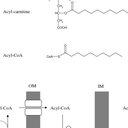Fast clearance of lipid droplets through MAP1S-activated autophagy suppresses clear cell renal cell carcinomas and promotes patient survival.
Palabras clave
Abstracto
Clear cell renal cell carcinoma (ccRCC) is composed of cells whose cytoplasm filled with lipid droplets, subcellular organelles coated with adipocyte differentiation-related protein (ADFP) for the storage of triacylglycerol converted from excess free fatty acids. Mammalian cells primarily use the autophagy-lysosome system to degrade misfolded/aggregated proteins and dysfunctional organelles such as lipid droplets. MAP1S (originally named C19ORF5) is an autophagy activator and promotes the biogenesis and degradation of autophagosomes. Previously, we reported that MAP1S suppresses hepatocellular carcinogenesis in a mouse model and promoted the survival of patients with prostate adenocarcinomas by increasing the degradation of aggregated proteins and dysfunctional mitochondria. Here we show that a suppression of MAP1S in renal cells causes an impairment of autophagic clearance of lipid droplets. In contrast, an overexpression of MAP1S causes an activation of autophagy flux and a reduction of lipid droplets so less DNA double strand breakage is induced. The levels of MAP1S in normal renal cells are dramatically higher than those in the ccRCC tissues and cell lines derived from renal cell carcinomas. High levels of MAP1S are associated with a reduced malignancy and metastasis of ccRCC and predict a better survival of ccRCC patients. Therefore, autophagy defects in the degradation of lipid droplets triggered by the MAP1S deficiency may enhance the initiation and development of ccRCC and reduce the survival of ccRCC patients.



